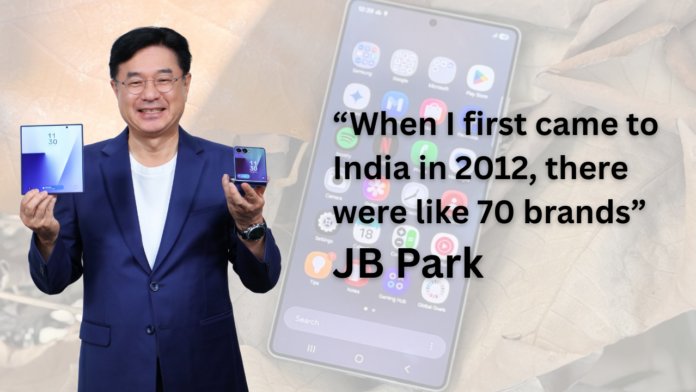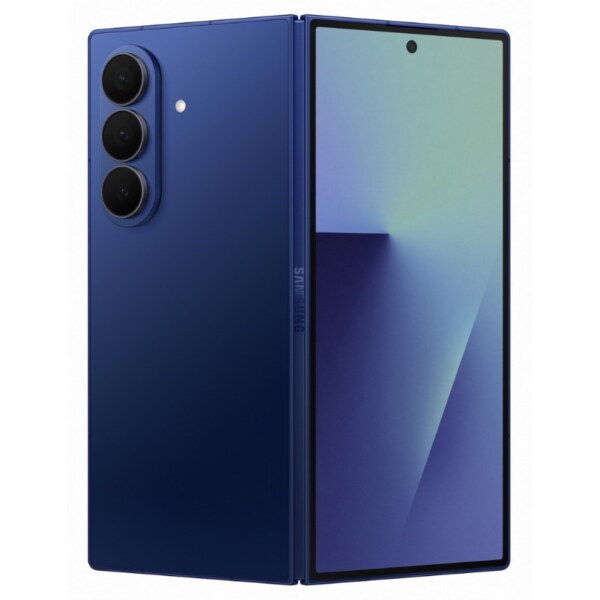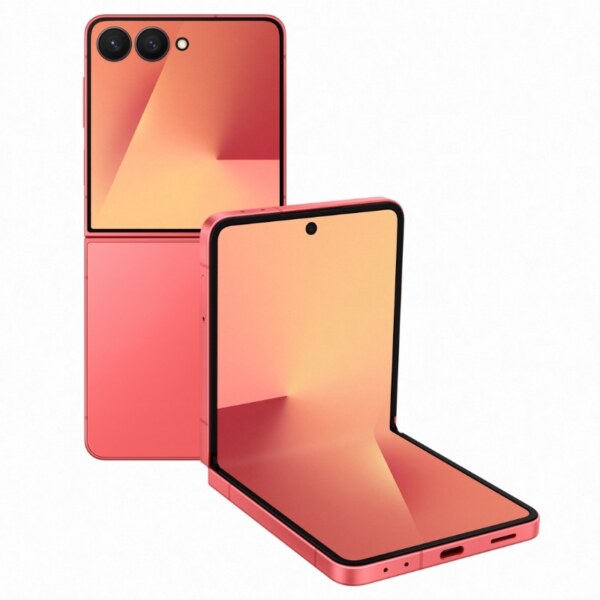In a market once flooded with smartphone brands, Samsung has chosen a different path: less clutter, more clarity. At the centre of this strategy is JB Park, President and CEO of Samsung Southwest Asia, who believes that focusing on efficiency and reducing redundancy is the only way to compete in India’s brutally competitive smartphone space.
“When I first came to India in 2012, there were like 70 brands – feature phone brands, local brands, and Chinese, Korean, Japanese and Scandinavian brands. I thought, how are these 70 brands competing with each other?”
JB Park said to The Mobile Indian
Over the past decade, India’s smartphone ecosystem has undergone rapid consolidation. In 2016, the number of operating brands was estimated at over 90, according to The Mobile Indian’s data. In 2024, fewer than 30 remain. The top five brands now control the vast majority of the market.
From Overcrowded to Curated: Samsung’s Portfolio Shift
When Park first reviewed Samsung’s portfolio in India, he found that the brand had more than 50 phone models — some priced just ₹100 to ₹300 apart.
“If I dropped the price on one model, it was like a domino. I had to drop prices on the entire portfolio.”
JB Park
This pricing domino effect exposed a key vulnerability: over-fragmentation. Samsung responded by streamlining its SKUs and shifting its strategy toward targeted product lines and geographic segmentation.
Samsung India Device Portfolio (2021–2024)
| Year | No. of Models | No. of Variants |
|---|---|---|
| 2021 | 29 | 53 |
| 2022 | 20 | 42 |
| 2023 | 24 | 45 |
| 2024 | 24 | 51 |
The reduction in total SKUs has not limited Samsung’s market presence. Instead, it reflects a sharper focus on optimisation.
“I have to look at efficiency, concentration, where to fight? And that’s when you see optimization.”
Park emphasized that product decisions are based on frontline performance — not assumptions.
“If I am not making any progress in that channel, in that price point with that model, then I have to club things together and optimize it. And if that doesn’t work, then I have to split it.”
Market Consolidation: India’s Brand Landscape Shrinks
India’s smartphone boom saw a flood of brands entering between 2012 and 2016. Local and international players alike rushed to claim market share, leading to a hyper-fragmented ecosystem. However, the market has dramatically contracted since then.
| Year | Approximate No. of Brands | Key Market Trends |
|---|---|---|
| 2012 | 25+ | Competitive yet consolidated, the top 5 brands rule the market |
| 2013 | 69+ | Influx of Indian and Chinese brands; fragmentation begins |
| 2014 | 72+ | Over 1,500 phones launched by 72+ brands |
| 2015 | 80+ | Further exits: Xiaomi, Samsung, Vivo dominate |
| 2016 | 90+ | Peak fragmentation; new Chinese entrants intensify competition |
| 2017 | 90+ | Consolidation starts; top 5 brands grow share |
| 2018 | 75+ | Exit of weaker brands; market shifts to top-tier players |
| 2019 | 55+ | Competitive yet consolidated, the top 5 brands rule the market |
| 2020 | 43+ | COVID impact accelerates exits; Chinese brands hold majority |
| 2021 | 40+ | Only 10–12 brands maintain meaningful share |
| 2022 | 34+ | Focus shifts to profitable SKUs; fewer launches |
| 2023 | 32+ | Intense consolidation; survival of only dominant brands |
| 2024 | 29+ | Competitive yet consolidated; top 5 brands rule the market |
“If I battle across the entire front line, I cannot win,” Park said. “And (there are) massive brands in India. And it’s very competitive, as you know. And we are in every price point, I think.”
Historical Context: From Volume to Precision
In 2011 and 2012, Samsung was among the top contributors to India’s growing mobile ecosystem. The brand launched 39 devices in 2011 and 30 in 2012, second only to Micromax in total offerings.
| Year | Samsung Launches | Notes |
|---|---|---|
| 2011 | 39 devices | Included Galaxy smartphones and tablets |
| 2012 | 25 phones, 5 tablets | Micromax LED the volume race that year |
| 2024 | 24 phones | Streamlined but comprehensive lineup |
Today, Samsung focuses less on flooding the market and more on finding the right balance between reach and efficiency.
“It’s always trial and error, but it’s all relative to the front line of where we are having a battle.”
Targeted Strategy: One Size Doesn’t Fit All
Samsung’s A, M, and F series are each designed for specific audiences — from urban professionals to rural first-time smartphone users. Each line is tuned for different price points, and often tailored separately for offline, online, and regional markets.
“If I’m not making any progress in that channel, in that price point with that model, then I have to club things together and optimize it.”
Even as competition intensifies, Samsung continues to maintain a presence across the pricing spectrum, from budget to flagship.
“Then there is a mother company that has like five different brands and another U.S. company that plays very strong in the flagships. So, I had to fight with multiple A, M and F series across online, offline, tier two, three, four towns.”
Focus Is the New Scale
In India’s maturing smartphone market, success is no longer about the number of models launched — it’s about where and how they are deployed. Park’s approach emphasises focus, adaptability and optimisation.
For Samsung, the message is clear: less can indeed be more, especially when every product, price and platform is part of a calculated strategy.
“And (if) that doesn’t work, then I have to split it.”
As brand consolidation accelerates and consumer expectations evolve, JB Park’s trial-and-error philosophy might just be Samsung’s sharpest EDGE in the Indian market.




